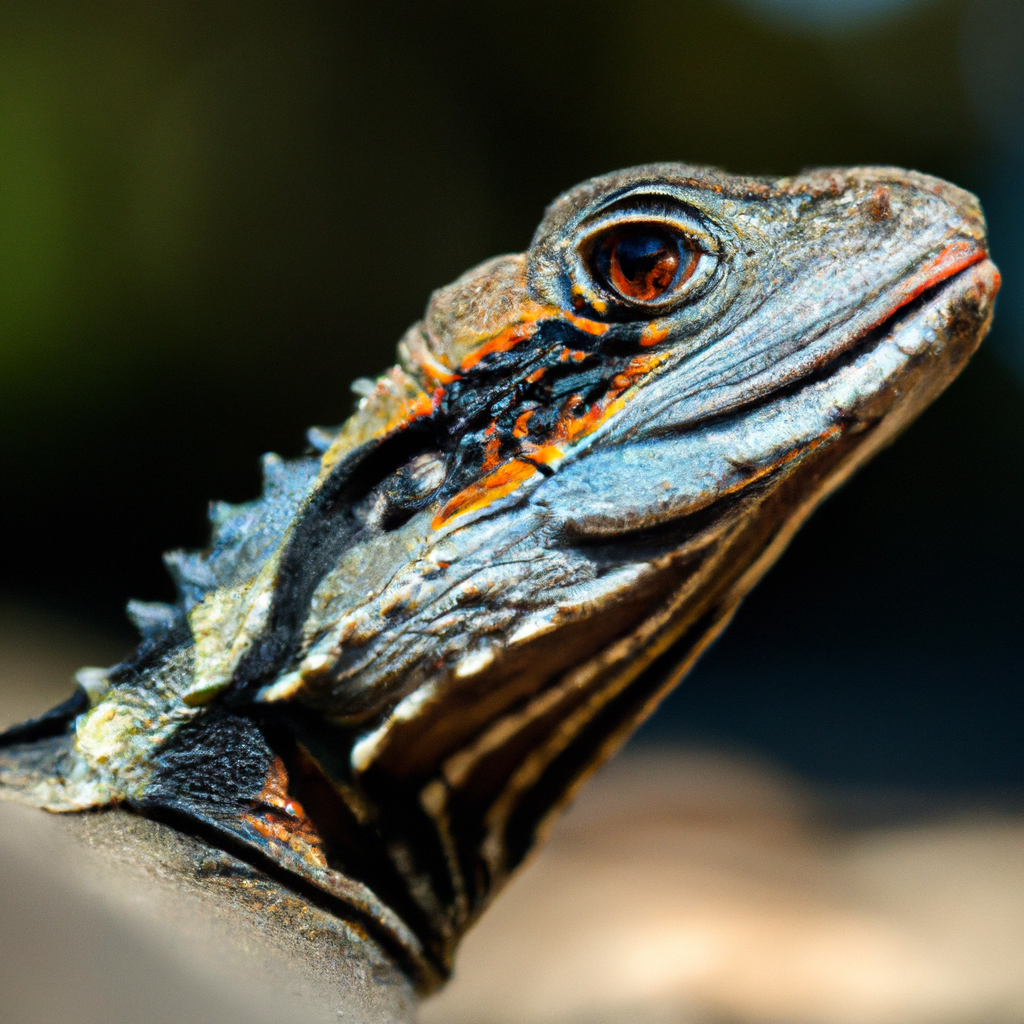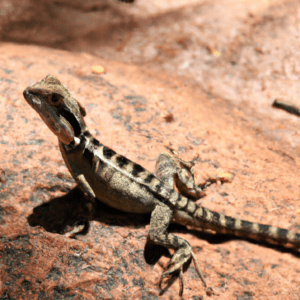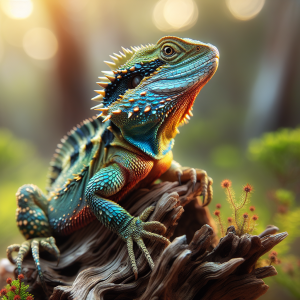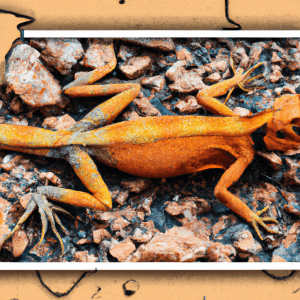Introduction to Lizard Diversity Hotspots in Australia
Have you ever marveled at the incredible diversity of lizards found in the vast landscapes of Australia? From the vibrant hues of the eastern bearded dragon to the elusive frilled lizard, Australia is a treasure trove of unique reptilian species that captivate both scientists and nature enthusiasts alike.
Exploring the lizard diversity hotspots in Australia is like embarking on a thrilling adventure filled with surprises at every turn. Picture yourself trekking through the rugged terrain of the Outback, keeping a keen eye out for the iconic blue-tongued skink basking in the sun. As you navigate the lush rainforests of Queensland, the intricate patterns of the tree-dwelling geckos may catch your attention, blending seamlessly with their arboreal surroundings.
Australia’s diverse ecosystems provide a haven for a myriad of lizard species, each with its own distinct characteristics and behaviors. Did you know that the thorny devil, a master of camouflage, can change its color to blend in with the desert sands, evading predators and mesmerizing onlookers with its intricate patterns?
As you delve deeper into the world of lizard diversity hotspots in Australia, you’ll uncover the interconnectedness between these reptiles and their habitats. The delicate balance between predator and prey, the intricate relationships between lizards and their environment – it’s a harmonious symphony of nature’s design.
Beyond the scientific marvels, the exploration of lizard diversity hotspots in Australia offers a profound opportunity to reflect on our role in preserving these invaluable ecosystems. How can we ensure the continued existence of these magnificent creatures for future generations to appreciate and study?
So, join me on this virtual journey through the enchanting realm of lizard diversity hotspots in Australia, where every encounter with these fascinating reptiles unveils a new chapter in the intricate tapestry of nature’s wonders.
Importance of Preserving Lizard Habitats
Have you ever stopped to think about why it’s so important to preserve the habitats of our scaly friends, the lizards? It’s not just about having more wildlife to admire when we go out bushwalking or camping – it goes much deeper than that. Preserving lizard habitats is crucial for maintaining the delicate balance of ecosystems and biodiversity in Australia.
Lizards play a vital role in the ecosystem as both predators and prey. They help control insect populations by feeding on pests like spiders, ants, and grasshoppers. Without lizards, these insect populations could explode, leading to potential crop damage and disrupting the natural food chain. Additionally, lizards themselves are a food source for birds of prey and other predators, contributing to the overall health and stability of the ecosystem.
But here’s where it gets interesting – did you know that lizards are also indicators of environmental health? By studying the presence and behavior of lizard species in an area, scientists can gain valuable insights into the environmental conditions and overall ecosystem health. Changes in lizard populations can signal shifts in climate, habitat quality, and the presence of pollutants or other harmful substances in the environment.
So, next time you spot a lizard basking in the sun or darting across your path, take a moment to appreciate the important role these creatures play in maintaining the biodiversity of our natural world. By understanding and preserving lizard habitats, we are not just protecting these fascinating creatures – we are also safeguarding the intricate web of life that sustains us all.
Top Lizard Species Found in Australian Hotspots
Have you ever heard of the thorny devil? These little creatures are fascinating lizard species found in the lizard diversity hotspots of Australia. With their spiky appearance and unique way of collecting water through capillary action along their skin, thorny devils are a must-see for any lizard enthusiast.
When exploring the top lizard species found in Australian hotspots, you’ll encounter a wide array of reptilian wonders. From the iconic bearded dragon to the colorful blue-tongued skink, Australia boasts an impressive diversity of lizard species that are both captivating and vital to the ecosystem.
One interesting fact about these Australian lizard hotspots is that they are home to some of the most ancient reptile lineages on Earth. These species have evolved over millions of years to adapt to the unique and diverse environments found across the continent.
As we delve into the world of Australian lizard species, it’s essential to appreciate the significance of preserving their habitats. Many lizard species are facing threats such as habitat destruction and climate change, making conservation efforts crucial for their survival.
By learning more about the top lizard species found in Australian hotspots, we can deepen our understanding of the importance of biodiversity and the interconnectedness of all living organisms. So, next time you’re out exploring the Australian wilderness, keep an eye out for these amazing creatures and take a moment to marvel at the beauty and diversity of our natural world.
Exploring Popular Lizard Watching Destinations
Have you ever been fascinated by the idea of exploring the diverse world of lizards in Australia? Let me tell you about some of the most popular lizard watching destinations that offer incredible opportunities to witness these fascinating creatures up close.
One of the most memorable experiences I had was visiting the Litchfield National Park in the Northern Territory. As I ventured through the park’s lush landscapes and rocky outcrops, I was amazed by the sheer variety of lizard species that call this area home. From the iconic frilled lizard to the colorful blue-tongued skink, each encounter was a reminder of the rich biodiversity found in these hotspots.
Did you know that Australia is home to over 800 species of lizards, making it a paradise for reptile enthusiasts? These diverse habitats provide a haven for a wide range of lizard species, each uniquely adapted to their environment. Whether you’re interested in observing the agile geckos in the arid deserts or the majestic monitors in the tropical rainforests, there is something for everyone in these lizard hotspots.
Exploring these destinations not only offers a chance to witness these incredible creatures in their natural habitat but also raises awareness about the importance of preserving their ecosystems. As human activities continue to impact wildlife populations, it becomes crucial to appreciate and protect these unique species for future generations to enjoy.
If you’re planning a lizard-watching adventure, remember to tread lightly and respect the natural environment. Avoid disturbing the animals or their habitats, and always follow local guidelines to ensure the safety of both yourself and the wildlife. By practicing responsible tourism, you can contribute to the conservation efforts aimed at safeguarding these precious lizard diversity hotspots.
So, are you ready to embark on an unforgettable journey to discover the wonders of Australian lizard diversity? Pack your binoculars, grab your camera, and get ready to explore the enchanting world of lizards in these breathtaking hotspots.
Conservation Efforts to Protect Lizard Diversity
Let’s dive into the fascinating world of conservation efforts aimed at protecting the diverse lizard species in Australia. Did you know that these efforts not only benefit the lizards themselves but also contribute to the overall health of the ecosystem? It’s like hitting two birds with one stone (figuratively, of course!).
Imagine this – you’re out in the wilderness, surrounded by the tranquil beauty of nature, and suddenly, you spot a vibrant Eastern Bearded Dragon basking in the sun. It’s moments like these that remind us of the importance of preserving these habitats for our scaly friends.
Conservation efforts play a crucial role in safeguarding the habitats and populations of various lizard species. By creating protected areas, implementing sustainable practices, and raising awareness about the significance of biodiversity, conservationists are working tirelessly to ensure a bright future for these unique creatures.
Now, here’s a thought-provoking question for you: How can we strike a balance between human activities and the conservation of lizard diversity in Australia? It’s a complex challenge that requires innovative solutions and collective action. By understanding the impact of our actions on the environment and supporting conservation initiatives, we can all play a part in preserving the rich diversity of lizard species for generations to come.
So next time you’re exploring the Australian outback or venturing into a national park, take a moment to appreciate the beauty of these fascinating reptiles and consider the efforts being made to protect their habitats. Together, we can make a difference in ensuring the survival and thriving of lizard diversity hotspots in Australia.
Tips for Eco-Friendly Lizard Spotting
When it comes to eco-friendly lizard spotting, one practical tip that can make a big difference is to prioritize observation over interaction. This not only ensures the safety and well-being of the lizards but also helps to minimize any negative impact on their natural habitats.
I remember one time when I was out hiking in a lizard hotspot in Australia, I spotted a beautiful Eastern Bearded Dragon basking in the sun. Instead of getting too close or trying to touch it, I found a safe distance to observe it from and admired its intricate patterns and behavior. By respecting the lizard’s space and allowing it to go about its business undisturbed, I was able to have a memorable wildlife encounter without causing any harm.
Choosing to be an eco-conscious lizard spotter means being mindful of your actions and their potential effects on the environment. Simple steps like staying on designated trails, refraining from feeding wild lizards, and avoiding using flash photography can all contribute to a more sustainable and respectful approach to wildlife viewing.
So, next time you’re out exploring a lizard hotspot in Australia, remember that the goal is to observe and appreciate these fascinating creatures in their natural habitats without disrupting their lives. By following these eco-friendly tips, you can make a positive impact on lizard conservation efforts and help ensure that future generations can also enjoy the beauty and diversity of Australia’s lizard populations.
Wildlife Photography in Australian Lizard Hotspots
When it comes to wildlife photography in Australian lizard hotspots, there’s a whole world of opportunity waiting to be captured through the lens. Picture this: the sun setting over the rugged outback, casting a warm glow on a majestic frilled lizard as it emerges from its hiding spot. It’s moments like these that make wildlife photography truly magical.
Capturing these fleeting moments can be both exhilarating and challenging. Every photographer knows the struggle of trying to get that perfect shot while respecting the natural habitat of the creatures they’re photographing. Finding the right balance between getting up close and personal with the lizards and maintaining a safe distance to avoid disturbing them is crucial.
One practical tip for wildlife photography in Australian lizard hotspots is to be patient and observant. Lizards are known for their quick movements and elusive nature, so taking the time to study their behavior and movement patterns can greatly improve your chances of capturing stunning photographs. Additionally, using a telephoto lens can help you get close-up shots without intruding on the lizards’ space.
Another key aspect of wildlife photography in lizard hotspots is understanding the importance of ethical photography practices. It’s essential to prioritize the well-being of the animals and their environment above getting the perfect shot. By following guidelines on ethical wildlife photography, you can ensure that your photography not only captures the beauty of these creatures but also contributes to their conservation and protection.
So, the next time you find yourself in an Australian lizard hotspot with your camera in hand, remember to approach your photography with respect, patience, and a keen eye for detail. Who knows, you might just capture a moment that will inspire others to appreciate and protect the incredible diversity of lizard species in Australia.
Enhancing Awareness and Appreciation for Lizard Diversity
Have you ever considered the art of wildlife photography in Australian lizard hotspots? Let me tell you, capturing these scaly creatures in their natural habitat is both thrilling and challenging.
Picture this: you’re crouched low in the Australian outback, camera poised, waiting for the perfect shot of a vibrant blue-tongued lizard basking in the sun. The lizard suddenly scurries away, leaving you with a blurred image of its tail. It’s all part of the adventure!
Wildlife photography in lizard hotspots requires patience, skill, and a keen eye for detail. These elusive creatures move swiftly and blend seamlessly into their surroundings, making them a fascinating subject to photograph.
One interesting fact about lizard photography is that lighting plays a crucial role in capturing their intricate scales and vibrant colors. The golden hour, just after sunrise or before sunset, provides the perfect soft light for enhancing the textures and hues of these reptiles.
As you navigate the rugged terrain of lizard diversity hotspots, remember to respect the natural environment and its inhabitants. Avoid disturbing the lizards or their habitats, and always prioritize their well-being over getting the perfect shot.
So, next time you venture into the wild in search of lizard diversity hotspots, bring your camera along and immerse yourself in the beauty of these fascinating creatures. Who knows, you might just capture a breathtaking moment that will stay with you forever!




